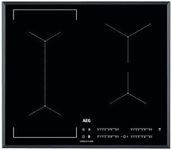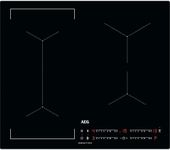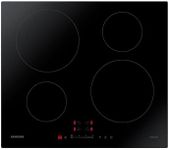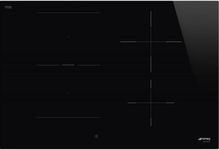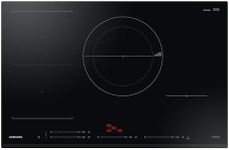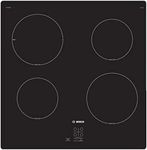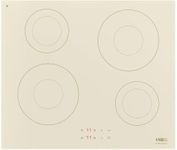Buying Guide for the Best Induction Hobs
Induction hobs are a modern and efficient way to cook, using electromagnetic fields to directly heat pots and pans. This method is not only faster but also safer and more energy-efficient compared to traditional gas or electric hobs. When choosing an induction hob, it's important to consider your cooking habits, kitchen space, and the features that will best suit your needs. Understanding the key specifications will help you make an informed decision.Size and Number of ZonesThe size of an induction hob and the number of cooking zones it offers are crucial factors to consider. Induction hobs come in various sizes, typically ranging from 30cm to 90cm in width, with the number of zones varying from two to six or more. If you have a small kitchen or cook for one or two people, a smaller hob with fewer zones might suffice. However, if you often cook multiple dishes at once or have a larger family, a larger hob with more zones would be beneficial. Consider your cooking style and kitchen space to determine the right size and number of zones for you.
Power LevelsPower levels on an induction hob determine how quickly and efficiently it can heat your cookware. Most induction hobs offer a range of power levels, allowing you to adjust the heat precisely. Higher power levels mean faster cooking times, which is great for boiling water or searing meat. However, having a wide range of power levels is also important for more delicate cooking tasks, like simmering sauces. Consider your cooking habits: if you often need quick heat, look for a hob with higher power levels, but ensure it also offers lower settings for versatility.
Control TypeInduction hobs come with different types of controls, such as touch controls, knobs, or sliders. Touch controls offer a sleek, modern look and are easy to clean, but some users find them less intuitive than traditional knobs. Sliders provide a middle ground, offering precise control with a modern interface. Consider what you find most comfortable and easy to use, as this will affect your overall cooking experience. If you prefer a more tactile experience, knobs might be the way to go, while tech-savvy users might enjoy the precision of touch or slider controls.
Safety FeaturesSafety features are an important consideration when choosing an induction hob. Common safety features include child locks, automatic shut-off, and residual heat indicators. Child locks prevent accidental changes to the settings, while automatic shut-off can turn the hob off if it detects overheating or if a pan is removed. Residual heat indicators alert you when a zone is still hot after use. If you have children or are concerned about safety, look for a hob with comprehensive safety features to ensure peace of mind while cooking.
Flexibility and Bridge ZonesSome induction hobs offer flexibility zones or bridge zones, which allow you to combine two or more zones into a single larger cooking area. This feature is particularly useful if you use large or irregularly shaped cookware, such as griddles or fish kettles. If you frequently cook with such cookware, consider a hob with this feature to enhance your cooking versatility. Otherwise, standard zones might be sufficient for your needs.
Ease of CleaningInduction hobs are generally easier to clean than traditional hobs because the surface doesn't get as hot, reducing the chance of spills burning onto the surface. However, the ease of cleaning can vary depending on the design and materials used. Look for a hob with a smooth, flat surface and minimal crevices where dirt can accumulate. If easy maintenance is a priority for you, consider models that emphasize easy cleaning in their design.
